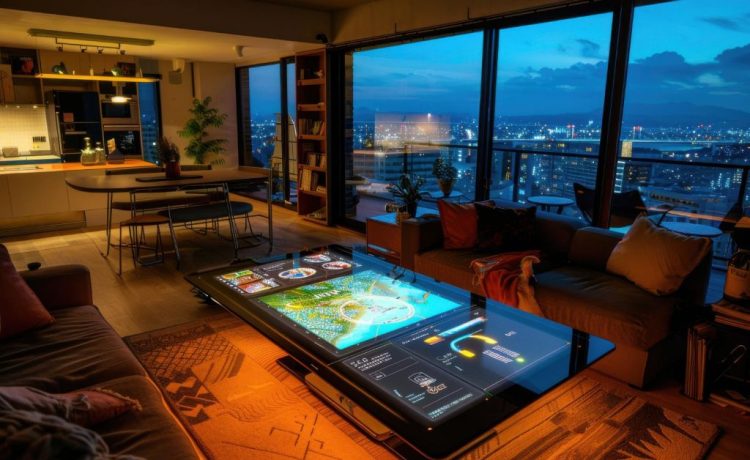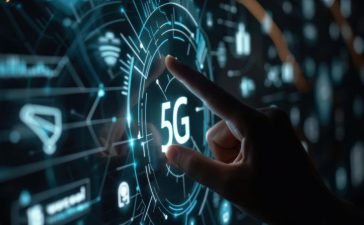Living in a city has always been a dynamic experience. With the rise of technology, the very fabric of urban life is undergoing a fascinating evolution. From how we live and move to how we interact with our communities, technology is reshaping every aspect of urban living. Understanding these changes is crucial for anyone looking to make the most of modern city life.
How Technology is Reshaping Urban Dwellings
Smart home technology is at the forefront of transforming urban dwellings. By integrating IoT devices, residents can control lighting, heating, and security systems with just a tap on their smartphones. This not only adds a layer of convenience but also significantly boosts energy efficiency. For instance, smart thermostats learn your schedule and adjust temperatures accordingly, reducing energy consumption and lowering utility bills.
The impact of smart technology extends beyond individual homes. In connected urban environments, entire buildings can communicate with each other. Imagine a scenario where your building automatically adjusts energy use based on real-time data from the grid, ensuring optimal efficiency. Such innovations are not just futuristic dreams; they are becoming a reality in smart cities around the world.
The Future of Mobility in Cities
Transportation technology is another area experiencing rapid advancements. Electric vehicles (EVs) are leading the charge in making urban mobility more sustainable. Cities like Oslo and Amsterdam are pioneering the shift towards EVs by installing extensive charging infrastructure. This transition not only reduces carbon emissions but also promotes a cleaner, quieter urban environment.
Ride-sharing platforms like Uber and Lyft have revolutionized how people move around cities. These services offer flexible, on-demand transportation, reducing the need for private car ownership. Combined with urban planning innovations such as dedicated bike lanes and pedestrian-friendly zones, cities are becoming more accessible and less congested.
Urban planning itself is being reimagined through technology. Tools like AI and big data are helping city planners design more efficient, livable spaces. By analyzing traffic patterns, population density, and environmental factors, urban planners can create cities that are not only functional but also enjoyable to live in.

Technology in Urban Safety and Security
Surveillance technology plays a critical role in enhancing urban safety. High-definition cameras and advanced software can monitor public spaces in real-time, quickly identifying and responding to potential threats. In cities like London and Singapore, extensive surveillance networks have proven effective in reducing crime rates and improving public safety.
However, the rise of surveillance technology raises important questions about privacy. Striking the right balance between security and individual rights is a complex challenge. Transparent policies and regulations are essential to ensure that surveillance is used responsibly and ethically.
Beyond surveillance, technology is also improving emergency response systems. Smart sensors and communication networks enable quicker and more efficient responses to incidents. For example, connected traffic lights can create clear paths for emergency vehicles, potentially saving lives in critical situations.
Community Building in the Digital Age
Digital platforms are reshaping how urban communities interact and thrive. Social media networks like Facebook and Nextdoor provide spaces for neighbors to connect, share information, and organize events. These platforms foster a sense of community, even in densely populated urban areas where face-to-face interactions may be limited.
Technology-driven community initiatives are also gaining traction. Apps that facilitate local food sharing, neighborhood watch programs, and community gardens are becoming increasingly popular. These initiatives leverage technology to build stronger, more engaged communities.
The rise of co-working spaces exemplifies the blend of community and technology. These spaces offer a shared work environment equipped with high-speed internet and state-of-the-art amenities. They provide opportunities for networking, collaboration, and community building, all of which are essential for urban professionals.
Conclusion
The intersection of technology and urban living is creating exciting possibilities for the future. From smart homes and electric vehicles to advanced surveillance and digital communities, technology is redefining what it means to live in a city. For tech enthusiasts, urban dwellers, and innovators alike, staying informed and engaged with these developments is more important than ever.
Understanding the impact of technology on urban living is not just about keeping up with trends; it’s about shaping the future of our cities. By participating in this conversation and exploring the resources available, you can contribute to a more connected, efficient, and vibrant urban environment.
For more insights and resources on how technology is transforming urban life, stay tuned to our blog and join our community discussions. Together, we can explore the endless possibilities that technology brings to urban living.














